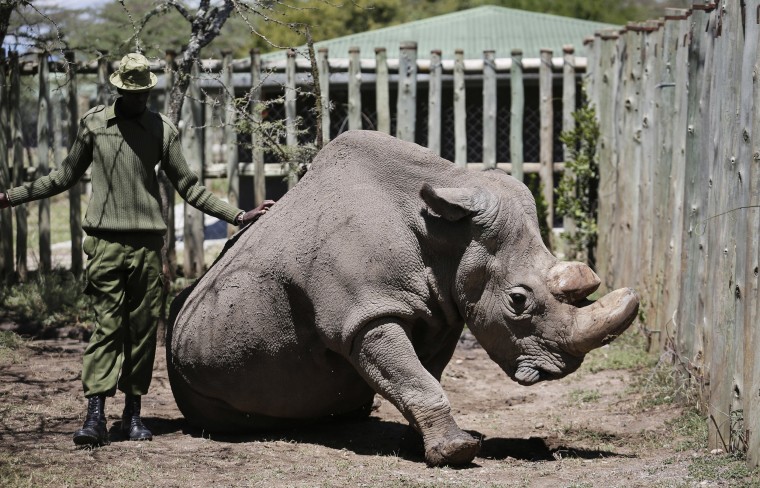Humans have been killing off the biggest game animals for millennia, and we’re still doing it.
A study to be published Friday in the journal Science argues that humans steadily drove into extinction the biggest land creatures, such as mammoths, rhinos and giant bears.
And human trophy hunting is still sending the biggest land mammals into the endangered zone, the researchers say, with little hope left for saving them from extinction.
Their new analysis contradicts arguments that climate change drove the extinctions of many animals, such as North American camels, several species of rhinoceros, the North African elephant and saber-toothed tigers.
If the trend keeps up, the cow, at around 2,000 pounds, may end up being the biggest land mammal, the team of researchers, led by biologist Felisa Smith of the University of New Mexico, argued.
There’s no debate that as humans spread, big mammals declined. But some experts have said that the same climate, weather and geological conditions that killed off the big game allowed humans to thrive and spread.
Smith’s team did a new analysis, looking at the fossil record of large and small mammals and comparing it to what’s known about the spread of humans across the globe.
They found little evidence that climate was to blame for extinctions of big game species.
Large mammals were abundant as people evolved and spread, they noted. “For example, a striking feature of the Pleistocene was the abundance and diversity of extremely large mammals such as the mammoth, giant ground sloth, woolly rhinoceros, and saber tooth tiger on all habitable continents,” they wrote.
And, they also found, large and small mammals were both affected by changes in average temperature.
Yet the big extinction events mostly affected the really big animals.
"If climate were causing this, we would expect to see these extinction events either sometimes (diverging from) human migration across the globe or always lining up with clear climate events in the record," Kate Lyons of the University of Nebraska, who worked on the study team, said in a statement. "And they don't do either of those things."
It’s still going on.
“Wild mammals are in decline globally because of a lethal combination of human-mediated threats, including hunting, introduced predators and habitat modification,” the researchers wrote.
It’s no surprise, said Lyons.
"From a life-history standpoint, it makes some sense. If you kill a rabbit, you're going to feed your family for a night. If you can kill a large mammal, you're going to feed your village,” she said.
And people do prefer to kill the biggest animals, whether for food or for glory. “It just seems to be something that we do,” she said.


